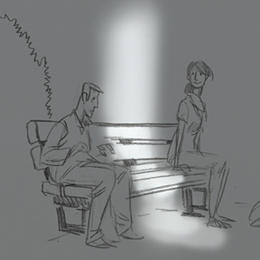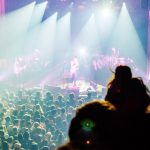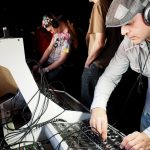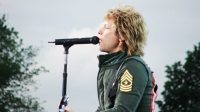7 Ideas For A More Playable City, From Sociable Benches To Musical Intersections
What do cities need to snap us out of our busy, stressed-out lives? How about a little more fun embedded in them.
There are many ways our cities can become more fun, more tactile, and more social. The concept of the “playable city” offers citizens ways to engage in their environment and with people around them, rather than just trudging through their day.
Through infrastructure or amenities, physical surroundings are animated with sound and images. People are nudged into becoming more social. You can see it in the examples below—the seven contenders for this year’s Playable City award, organized by Watershed, a “digital creativity center” in Bristol, U.K. The winner is chosen June 9, 2015.
Lightning conductor

A responsive light installation, Lighting Conductor reacts as people move past, creating a motion-sensitive experience in the middle of a public space. People can “conduct their very own light orchestra through the movement of their bodies,” says design shop Strange Thoughts. The more vigorous their movements, the brighter and faster the pulse.
“With a simple swish of an arm a user will be able to send a pulse of light shooting along any path they aim at in their local park. The pulse of light will then continue up into the tree at the end of the path, illuminating the entire tree with an array of mesmerizing colors,” its submission says.
Mirimba bench
Florida-based Urban Conga created the multicolored Mirimba bench consisting of “tuned wooden bars” coded to different notes (red is an A, green a C, and so on). “The project is about using music and play to create activity in an underutilized space,” says Ryan Swanson, a member of the the group. “It creates a place for people to come together and interact with one another instead of just sitting on a bench checking their Twitter feed and how many Instagram likes their picture got.”
People are becoming desensitized from their environment because they’re always looking at their phones, Swanson believes. The bench is a reminder to look up. “The park bench has always been a key element to public space, in creating a place where two strangers can come together. This has gotten lost when two people sit down and are consumed by their phones or iPads.”
Embedded musical instruments
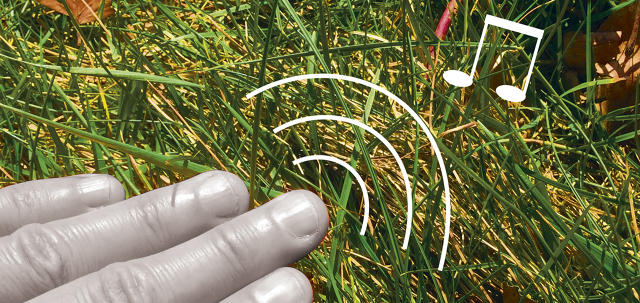
“Supernatural” is a series of musical instruments embedded in historic places around Bristol, with the aim of conjuring up the “natural and mystical history specific to each location.” The artists, Kevin Walker and Yuri Suzuki, want to “re-wire” and “re-wild” the city with a combination of “electrically-generated tones, found sounds, and bespoke beats,” with instruments appearing as plants, soil, water.
“The instruments would be identified in a minimal way, with a simple visual identifier or via an online map,” says Walker, head of information experience design at the Royal College of Art. “We would hope that just knowing the general location would encourage people to explore the environment with their hands and ears. They would look much like the other natural materials around, but just slightly odd.”
Puffin Jam
Puffin Jam, from Unsworn Industries in Sweden, adds playability to pedestrian crossing controls. As well as requesting passage, you can play musical notes to yourself or make playful communication with the person on the other side of the street.
Making benches more sociable

Like the Mirimba Bench, the “Take A Seat” bench “encourages strangers to meet and interact over a familiar piece of urban furniture.” It does this with a series of sensors and LEDs that shine and blink as people move past. When someone sits down, it comes to life—”encouraging movements from the person sitting, attracting other potential sitters, and getting them to interact.” The project comes from Happy City Lab, in Switzerland, which runs the neighbor box concept.
Whispering clouds and animals
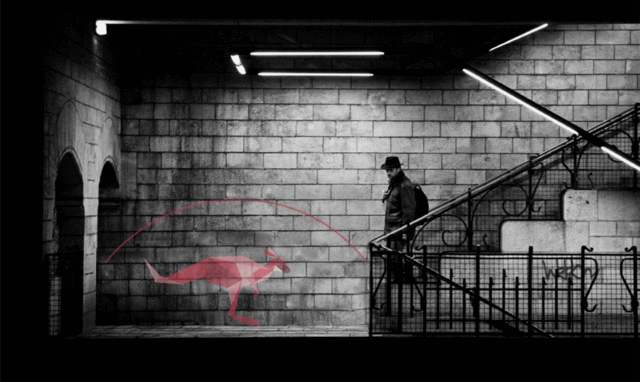
Two other projects use light to accent the physical environment. UrbanAnimals, from Poland’s LAX studio, projects dolphins, rabbits, kangaroos, and beetles “in places of transition, places where people often do not contemplate their surroundings.” Tine Bech‘s “whispering clouds” light up and display messages, inviting communication between people in the same area. Bech calls it a “playful physical manifestation of the digital cloud.”
If we could combine all these wonderful interventions in one city, it would be the most fun city ever.
Fast Company , Read Full Story
(145)

